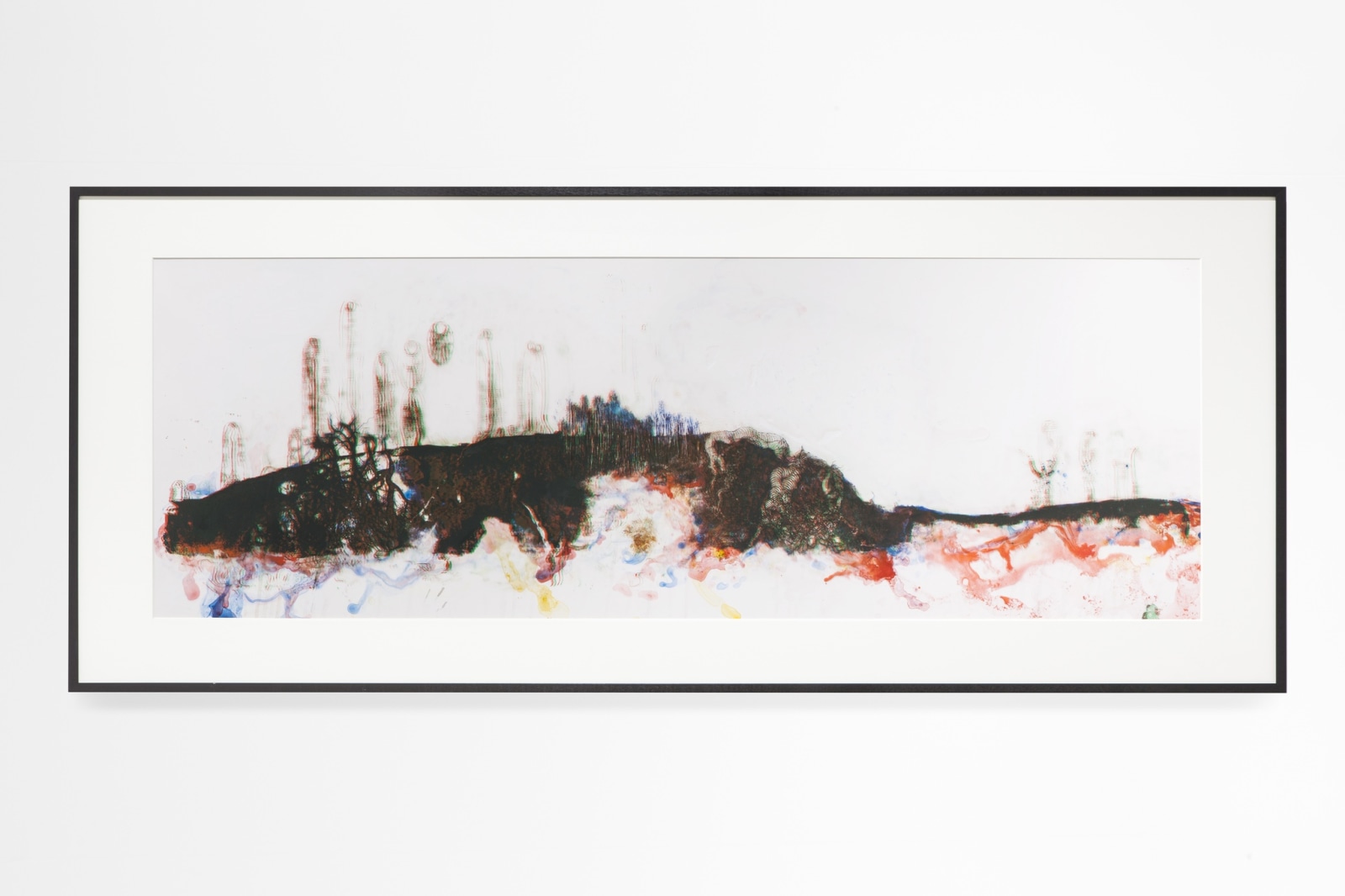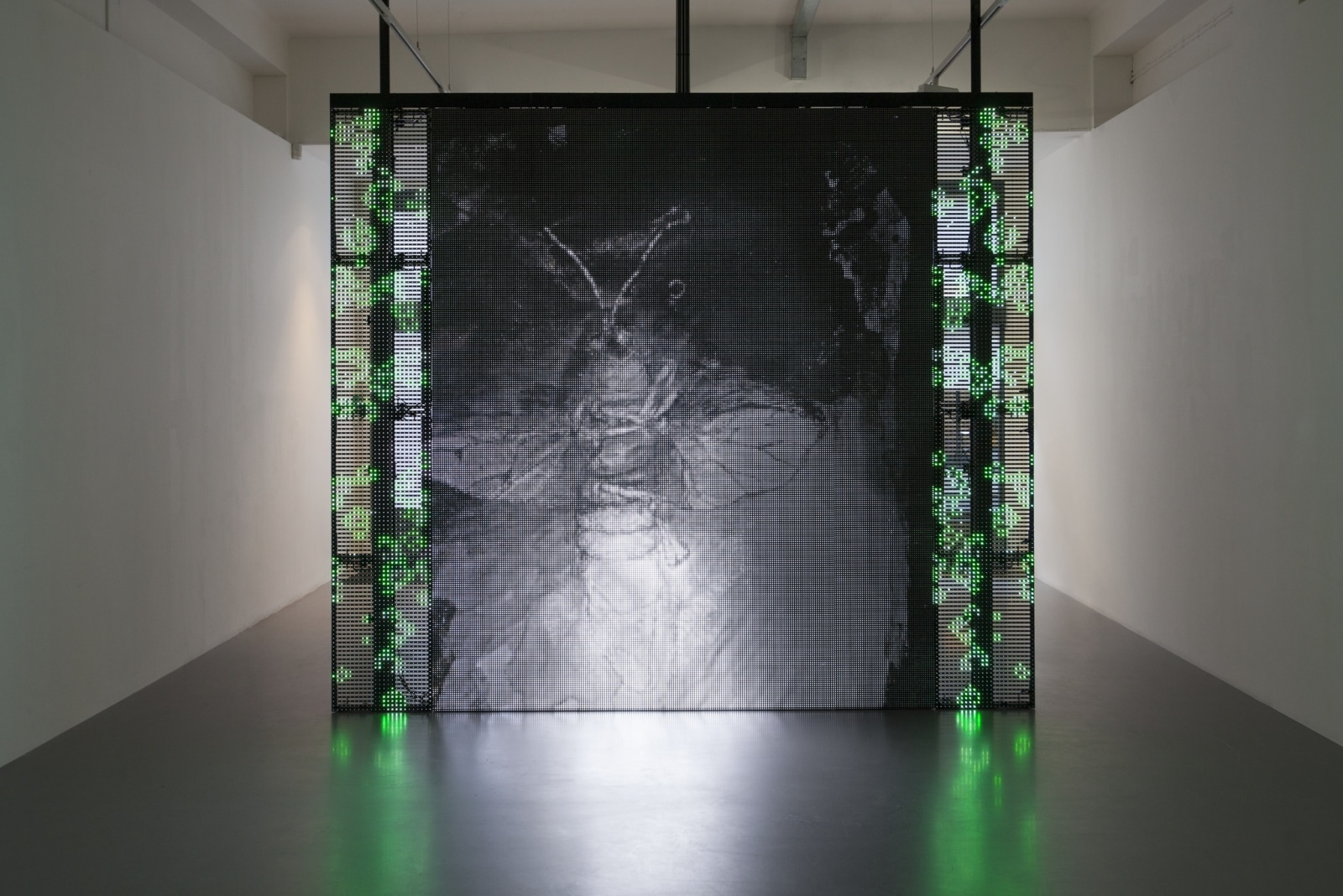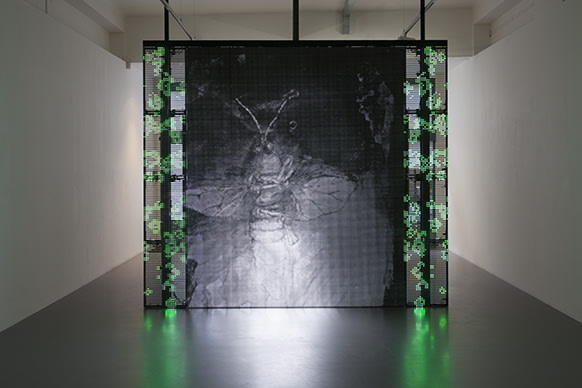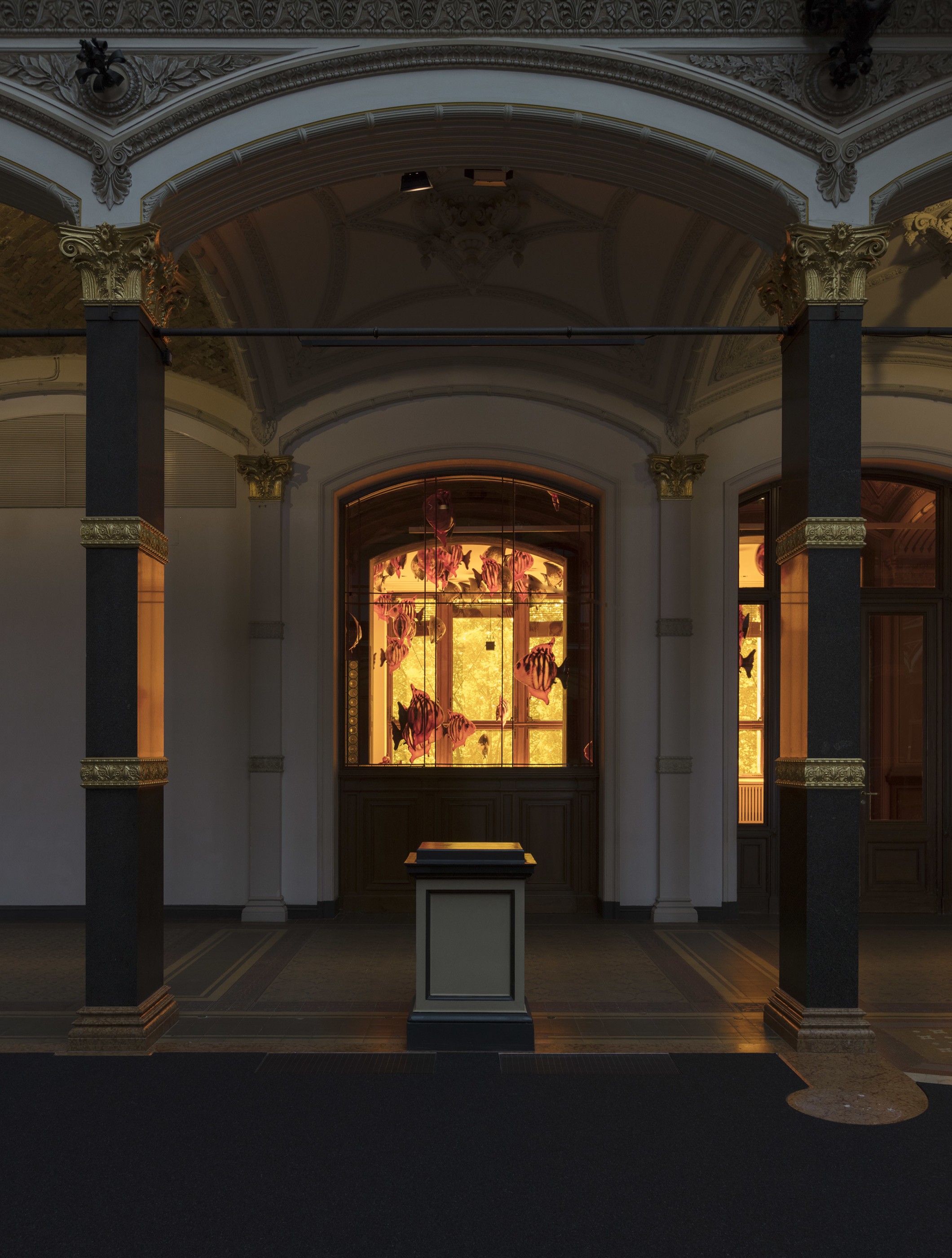Overview
Pilar Corrias Gallery presents With a Rhythmic Instinction to be Able to Travel Beyond Existing Forces of Life, Philippe Parreno's third solo exhibition at the gallery.
Comprising four new automatons, the show is Parreno's first in the UK since his 2010 solo exhibition at the Serpentine Gallery. The exhibition centres around the titular work, a new automaton assembled from hundreds of drawings created by Parreno over the last four years, each depicting the same insect: a firefly or luciola (small light), that is brought to life on a large LED screen.
In this new animation each of Parreno's 238 drawings become an individual flickering frame of the work. The repetition in making these drawings has become an automatic process for Parreno, like a machine or automaton, and the depiction of the luciola improves through reiteration. Parreno systematically gives the drawings away as gifts, usually as a triptych or in larger numbers to mirror 'The Game of Life' where, when fewer than two live cells exist, the neighbour dies. Algorithms found within 'The Game of Life', a cellular automaton developed by the British mathematician John Horton Conway in 1970, govern the structure of the work and reveal how complex patterns can emerge from the implementation of very simple rules, thereby creating cellular automata.
Parreno has separated the drawings into different groups with each sequence of frames selected according to the individual algorithm at work, through this process the 'animation' achieves a life of its own. The lifespan of each sequence is determined by the rules of cellular automata and its survival depends upon the rules of chance. A sequence can live for a few minutes or for at most a day. As each sequence 'dies' one drawing of a firefly appears frozen on the screen for a short time. As well as creating its own life, the automaton also creates its own soundtrack as the light intensity is turned into noise.
Additionally, Parreno transforms the gallery space visually and sonically. At the entrance is One Blind Sister (2014), a moving mechanical blind affixed to the main front window of the gallery and the first automaton in the show. The blind dances to the soundtrack created by the sounds of the street outside. The street noises are translated, through a computer programme, into an ambient melody amplified into the gallery space. The work both opens up and closes the space to viewers inside and passersby outside.
In the lower gallery space, is a lone flashing marquee, part of an ongoing series Parreno has worked on since 2006, installed upon a perspex wall. The light of the marquee is blinding and it recalls the flickering fireflies animation upstairs. As the marquee echoes the animation so the perspex wall echoes the transparent LED screen on which it is shown.
Hanging on the reverse of the perspex wall are a set of eight new drawings, depicting a garden. The silkscreen and ink drawings have been overpainted from drawings Parreno originally created for his film C.H.Z. (Continuously Habitable Zones) (2011) that portrays a black garden in Portugal, which continues to grow to this day. The original set of C.H.Z. drawings have provided the ground for another series to evolve, like a cycle of life and repetition producing new motifs. In so doing the drawings mark the fourth automaton in the exhibition, creating life through their potential to be viewed three dimensionally and alluding to a future that is yet to be.
Throughout his practice, Parreno has fundamentally redefined the exhibition experience by exploring its possibilities as a coherent "object" and a medium in its own right rather than as a collection of individual works. To this end, he conceives his shows as a scripted space where a series of events unfolds.
Philippe Parreno is a French artist and filmmaker who lives and works in Paris, France. He studied at the Ecole des Beaux-Arts in Grenoble from 1983 until 1988 and at the Institut des Hautes Etudes en arts plastiques at the Palais de Tokyo, Paris from 1988 until 1989. Parreno rose to prominence in the 1990s, earning critical acclaim for his work that employs a diversity of media including film, sculpture, performance, drawing and text. He has exhibited and published internationally and his work is included in permanent public and private collections across the world.
Parreno's work is represented in the collections of Centre Georges Pompidou, Paris; Kanazawa Museum of the 21st Century, Japan; MOMA New York; Musée d'art moderne de la Ville de Paris; San Francisco Museum of Modern Art; Solomon R. Guggenheim Museum, New York; Tate Modern, London; Walker Art Center, Minneapolis. Recently, Parreno has presented solo exhibitions at Palais de Tokyo, Paris (2014/2013); Garage Center for Contemporary Culture in Moscow (2013); Fondation Beyeler, Riehen/Basel (2012); Serpentine Gallery, London (2010-2011); Centre for Curatorial Studies, Bard College, New York (2009-10); Irish Museum of Modern Art, Dublin (2009-10); Kunsthalle Zürich (2009) and Centre Georges Pompidou, Paris (2009). His work has also appeared in the Venice Biennale (1993, 1995, 2003, 2007, and 2009), Lyon Biennale (1997, 2003, and 2005), and Istanbul Biennial (2001).
























































